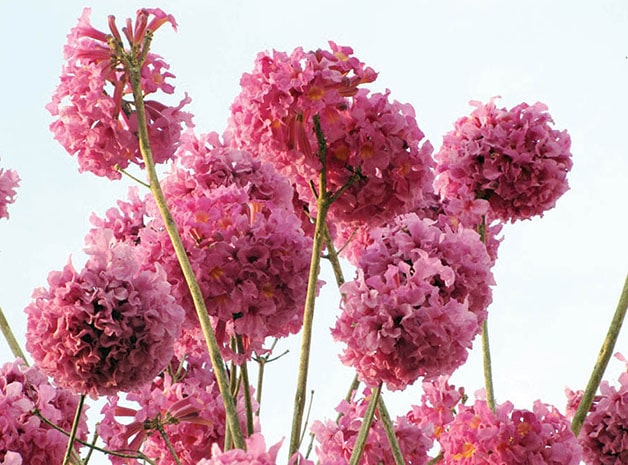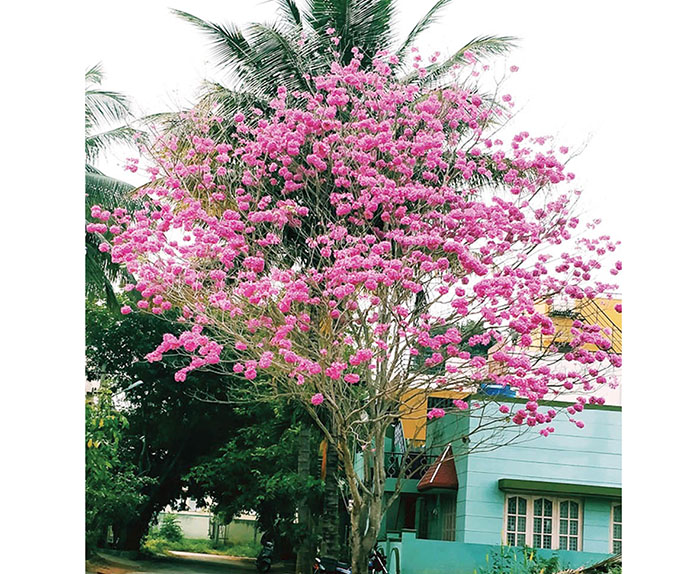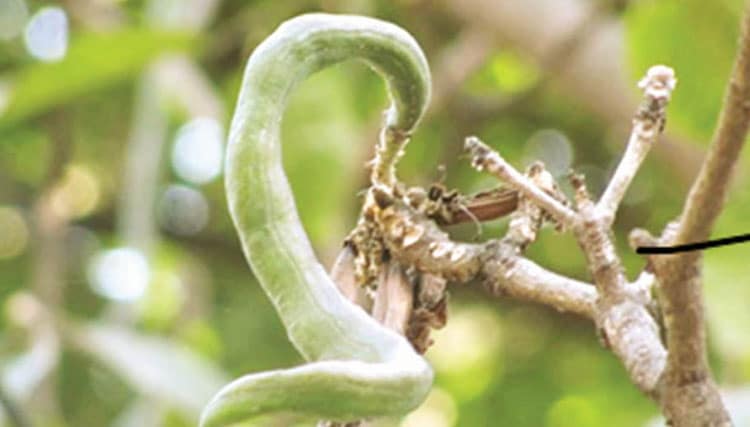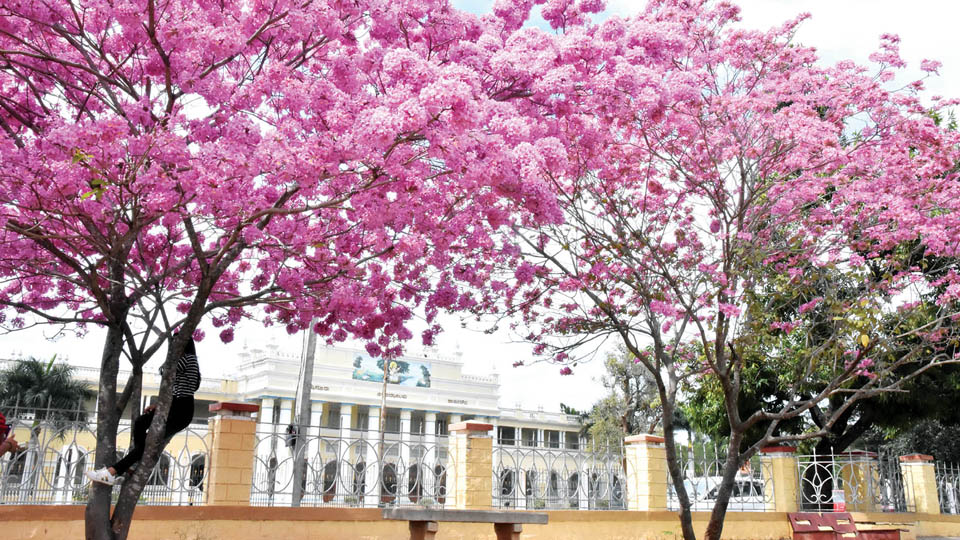Text & photographs by Dr. Mahadeswara Swamy, Scientist
With the onset of winter many a deciduous tree shed their old leaves followed by fresh growth of foliage and flowers. This phenomenon of rejuvenation begins during December in many ornamental trees lining the avenues of Mysuru. Among these ‘Pink Lapacho’ is the first to dress up in a new garb. With the leaves falling in the first few weeks and the blossoms covering the whole tree by Christmas and New Year, it provides a festive look on the roads and parks.
During peak season, the tree is leafless packed with clusters of congested terminal inflorescences held on a linear plane. Penetrating sun rays during mornings make the tree look magnificent and a treat to the eyes of passers-by. No doubt, it is the most beautiful ornamental tree during winter in Mysuru.

The tree is native to South America and also the national tree of Paraguay. It is known by other names like ‘Lavender Trumpet Tree’, ‘Pink Trumpet Tree’, ‘Ipe Roxo,’ ‘Taheboo Tree’, ‘Basant Rani’, ‘Gulabi Tabubia’ (Hindi). The scientific name is Handroanthus impetiginosus (syn.Handroanthus avellanedae, Tabebuia impetiginosa, Tabebuia avellanedae) and belongs to the family Bignoniaceae.
The genus is named after Oswaldo Handro, 20th century Brazilian Botanist and anthos (flower); specific name impetiginosus means scaly eruption. It is a large deciduous tree, sometimes reaching 30 m height. The straight bole can be 60 – 80cm in diameter. Generally, one third of the tree height is trunk and remaining two thirds are its longer branches. It has a large, globe like or round canopy which is often sparse. The bark is brownish grey, tough and hard to peel. The wood is of a pleasant yellowish colour, sometimes knotted.
The leaves are compound, palmate, with usually 5 leaflets with petioles of 2 to 3 inches long. They are opposite, elliptic and lanceolate shaped with slightly serrated margins and pinnate venation. The flower is large, tubular shaped, its corolla is often pink or magenta, about 2 inches long. Individual flowers are magenta with canary-yellow streaks. There are four stamens and a staminode. The fruit consists of a narrow dehiscent capsule containing several winged seeds.

Propagation
Seeds are sown as soon as they ripe in seed beds or containers. The germination occurs in 10 – 12 days. Seedlings grow quickly and are ready for transplantation in 3 – 4 months. Young plants establish well reaching a height of around 6 – 8 ft within two years. The tree can also be propagated by ‘air layering’ and ‘cuttings’ of half ripe stems.

Useful tips
- A species of higher elevations in the tropics, it grows well in subtropical areas like Mysuru.
- It is most suitable for planting on roads, private gardens and parks and other locations for its beauty and shade.
- The flowering season is December to January. The flowers remain on tree un-faded for a week or two.
- Plant them in a row on either side of the roads to provide a spectacular look.
- Prefers a well-drained fertile soil and full sunlight.
- The tree has a slow growth. Regular watering in hot dry months will help grow well.
- Fruiting is not common in Mysuru. 6 to 8 foot tall plants of 3 to 4 years old are available in plant nurseries. It is a feasible option as the plants start flowering in the 2nd year itself on transplanting.
- The flowers attract bees and several birds (humming birds, black jacobin, black-throated mango, stripe-breasted starthroat etc).
- This multi-purpose tree has not been exploited for its commercial usefulness in our country by the Departments concerned.
- The tree is closely related to other trumpet trees: Handroanthus pentaphylla / Tabebuia rosea and often confused with these species.
Uses
In its nativity, it is a multi-purpose tree growing wild and known for valuable medicine and timber besides beautification of landscape.
Medicinal uses
Lapacho plays an important role for South American indigenous population and used by herbalists as a general tonic, immunostimulant and for intestinal candidiasis. In traditional ethno medicine, a bitter brownish-coloured tea known as lapacho or taheebo is prepared from inner bark (bitter, cooling, pungent) and is widely used as a tonic during flu and cold season as well as for easing smoker’s cough. The tonic works by promoting lungs to expectorate and free deeply embedded mucus. The heartwood contains naphthaquinone called lapachol, which exhibits antibiotic and antitumor effects. Excessive use of the plant parts can lead to nausea, vomiting, dizziness and diarrhoea.

The valuable timber, sometimes traded as “Brazilwood”, is used for making flooring and decking. Its commercial exploitation is one of the causes of deforestation in Brazil.
Where to see Manasagangothri campus, Niveditanagar Park and many other parks, private gardens and avenues.
Mob: 97429-91057 e-mail: [email protected]








Recent Comments